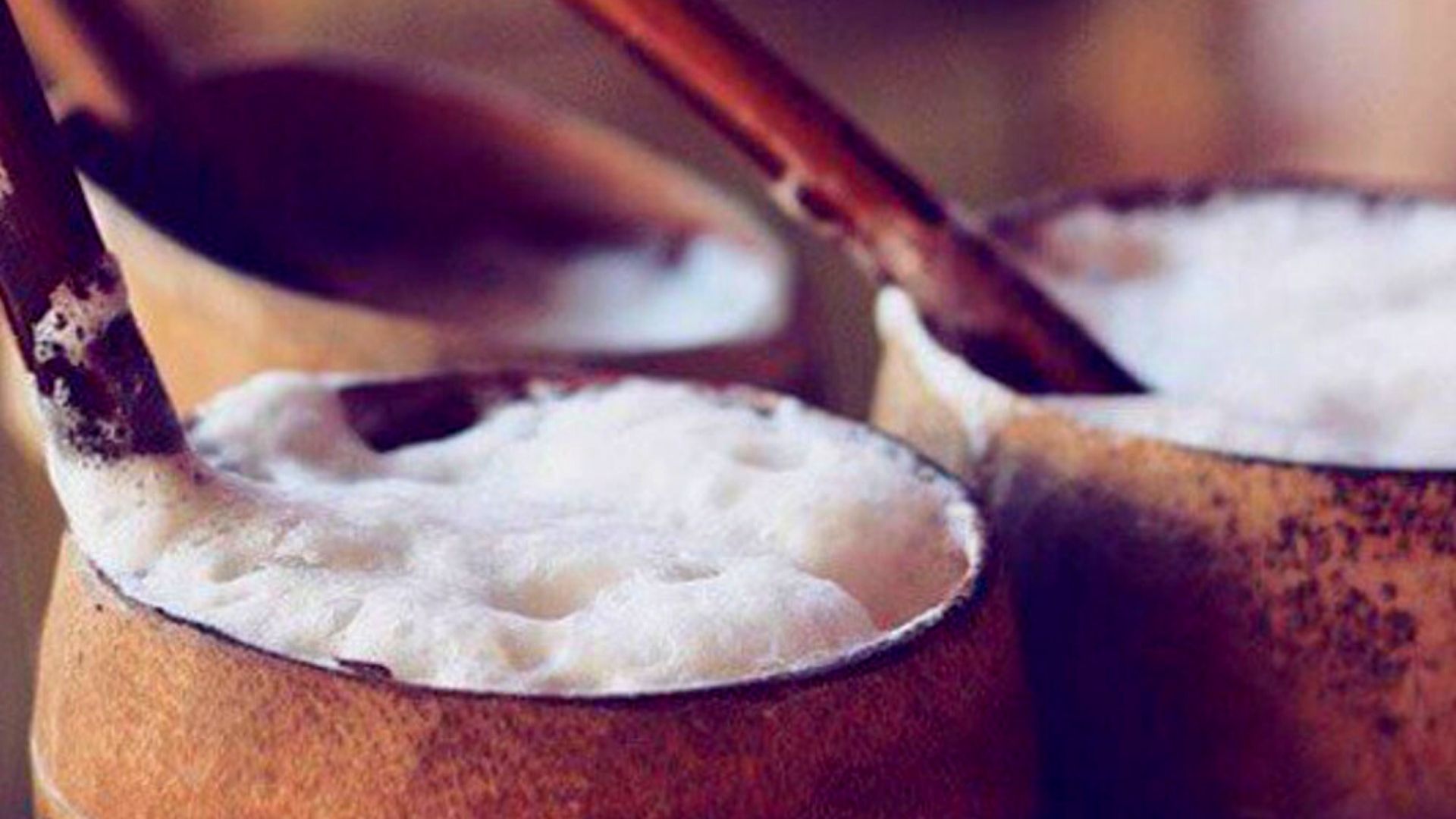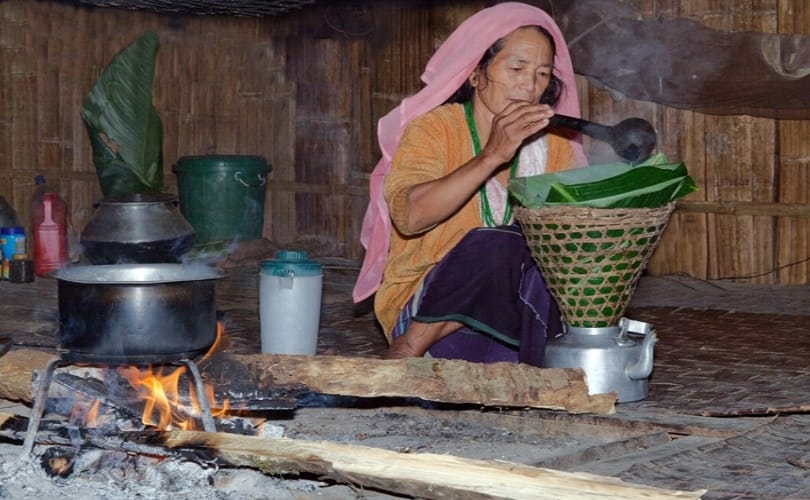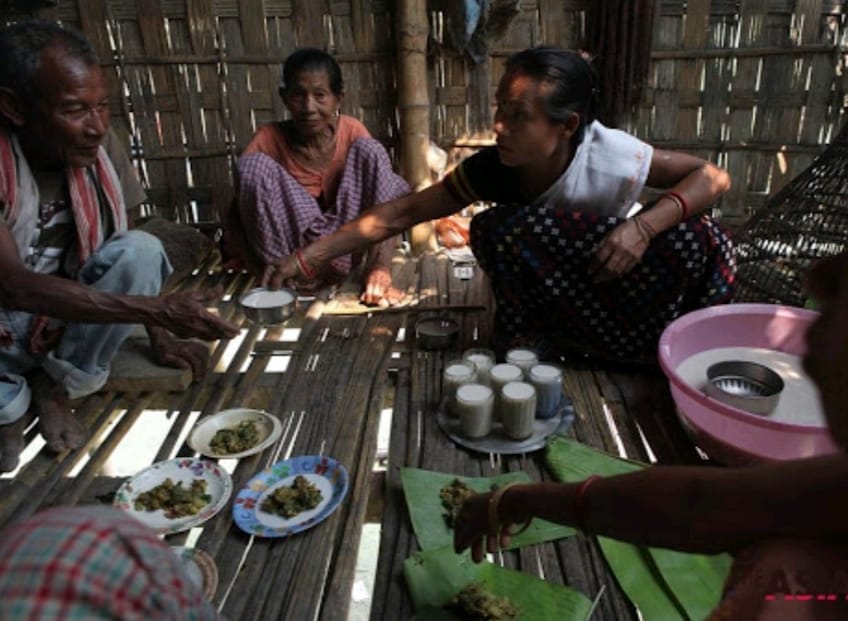
Recognised as ‘Scheduled Tribes’ under the Constitution of India, the Misings/Miris are designated as the second largest plains “tribal” group of Assam after the Bodos. They are mentioned as Mikir in the Constitution of India. As per the Census data of 2011, the overall “tribal” population of Assam accounted for more than 57% of the total population, and the population of the Misings stood at 5,87,310. Literally, the term Mising implies ‘people of the same blood and ethnic origin’.
Ethnically akin to the Adis and Nyshis of neighbouring Arunachal Pradesh and the Tanis of Tibet and Southern China, a large section of the Mising population is to be found residing along the fertile alluvial banks of the vivacious Brahmaputra and its tributaries such as the Subansiri and the Bharali in Assam. The ample availability of water near to the places of their residences has made rice cultivation and animal husbandry the two most important vocations of the Mising community in general.
Once while discussing about the politics behind increasing Christian conversions among the different janajati communities of Upper Assam, especially the Misings, my friend from Dhemaji district and who belongs to the Mising community herself, drew my attention to the traditional Gomarak or Gumrag/Gumrag So:man (Gumra or Gomarak implies ‘crowd’) dance of the Misings that is especially performed during the festival of Ali-ai-Ligang. Also known as Ligang or Mising Bihu among the non-Mising communities of the North-East, Ali-ai-Ligang is an annual springtime seed-sowing ceremony of the Misings.

One of the most distinguished dance forms of the Mising community, the Gumrag dance is a perfect manifestation of their cultural richness and diversity. The conversation with my friend reminded me of my own joyous and colourful Bihu dance that is performed with the same energy and gusto as any other Indian dance. These are a fundamental and inseparable part of the rich cultural mosaic of Bharatvarsha. My friend further went on to explain the significance of rice-beer and pork among the Misings as we relished on a delicious plate of Mising ethnic cuisine at the Mising Kitchen restaurant situated in the heart of Guwahati city.
Any celebration, whether it is a marriage or a religious ceremony or any other festival, is incomplete without rice-beer and pork among the Misings. Having been born and brought up in Assam, I was already familiar with the socio-cultural importance of locally-brewed rice beer among the Karbis, Dimasas, Rabhas, Sonowal-Kacharis, etc. The scene of women selling fresh home-made rice beer in earthen pots has almost become a regular feature at the bustling Beltola Bazar market area in Guwahati every Thursdays and Sundays.
The significance of rice can be understood from the fact that almost every other festival that is celebrated in North-East Bharat is a tribute to the different varieties of rice which are sown during different seasons of the year. In fact, this holds true for most of the festivals celebrated across different parts of India at different times of the year. If Eastern and Southern India are about rice, Northern and Western India are largely about wheat and coarse grains such as bajra, jowar, etc. But, rice occupies a special place of significance in these regions too. E.g. Vasant-Panchami/Saraswati Puja remains incomplete without eating peele-chawal in many North Indian homes even today. In many parts of Rajasthan, Haryana, and Western Uttar Pradesh, the first visit of the son-in-law to the bride’s home after marriage is marked by the cooking of rice as a special gesture of his welcome.

Traditional way of rice-beer preparation in the Northeast
Dried fish and pork, along with Apong (rice-beer), constitutes the main menu of the grand banquet that is organised as a part of the Ali-ai-Ligang festivities. Huge chunks of pork are cooked with Notke or Misika leaves, and served in the community feast with rice and Apong. The Misings adore Apong, for it is intrinsically associated with their culture and religion. No religious ritual is observed among the Misings without the presence of Apong. It is sprinkled by the Miboo (chief priest) over the main religious place of worship and other elderly persons sitting around it as a mark of soul purification.
During Ali-ai-Ligang, Apong is prepared in sufficient quantities in almost every Mising household. The women get together in the kitchen to prepare Apong and Purang/Tupula Bhaat (boiled rice dumpling wrapped in Tora-Paat into sizeable packets). Both of these are an essential and must-include ethnic dishes of the delicious Ali-ai-Ligang platter. It may be mentioned here that Apong/Lau-Paani/Xaaj-Paani is a quite common and popular drink among most of the janajati communities of Assam. Identified with wealth and affluence, Apong is prepared and consumed as a part of the popular culture of the Misings.
About 10-15 different varieties of plants having immense medicinal value are customarily used in the preparation of Apong by the Misings. However, this number varies from place to place depending upon the availability of all the plants in that particular place. Previously, the total number of plants that were used to prepare Apong was 50. But, this has now alarmingly reduced to less than half the number, which is actually a matter of serious concern from the point of view of environment and ecology.
 A Mising family enjoying their Ali-ai-Ligang feast. Apong is being served in the glasses.
A Mising family enjoying their Ali-ai-Ligang feast. Apong is being served in the glasses.
No:gin (white-coloured) and Po:ro (black-coloured) are the two main varieties of Apong which are prepared for serving guests and visitors on the occasion of Ali-ai-Ligang. The stage-wise preparation of Apong is a lengthy and tedious process. It requires freshly-harvested rice and paddy husk which are fermented together with various locally available, traditional medicinal herbs beneficial for human health, e.g. flowers of gendelabon (goat weed), the tender leaf base of seni-bon (sweet broomweed), tezmooi (toothache tree), maati-kothal (pineapple), ising-okang (climbing bird’s nest fern), madhuriam (guava), bonjaluk (diamond flower), the tuberous roots of bhumi-champa (Indian crocus) and bhuin-komora (Indian kudzu), tezpat (Indian cassia lignea), etc.
These herbs are not only used in the preparation of Apong but also for healing wounds and tumours, curing toothache and gum problems, fever and cough, malaria, sinusitis, diabetes, high blood pressure, eye-problems, etc. But, their increasingly reducing numbers has, of late, become a cause of serious concern among the Misings whose socio-cultural identity is intertwined with these plants at many different levels. Nevertheless, rice/dhaan is an indispensable item in the preparation of Apong. Rice straws are first burnt and then used to obtain chah-mod (ash liquor) which is smoky in colour. Very important and special guests are entertained by offering chah-mod.
The rice straws are later used in the process of filtration of the Apong which appears a little faint-greenish in colour in the beginning. In all religious festivals of the Misings including Ali-ai-Ligang, the leaves of jagnya dimaru (cluster fig), marsang (Brazil cess), and mesaki (Duggal fibre tree) are used as the primary raw materials in the preparation of special curries, both vegetarian and non-vegetarian. They also believe that growing the two rarely found bhumi-champa (used in Apong) and nal-khagari (wild reed) plants inside the compound of their houses ahead of the Ali-ai-Ligang festival brings peace and harmony to the family and also helps keep malevolent spirits at bay.
There is a tradition among the Misings to use the water with which rice straws have been washed prior to the preparation of Apong for the treatment of stomach-related disorders among young kids. It is a ritual among the Misings to lavishly pamper their elderly guests, friends, relatives, and neighbours with rice and Apong, as a mark of respect and obeisance. If by any chance Apong is not available, the Misings make use of tambula (areca-nut) and betel/paan leaves to welcome their guests. Both these items are considered as an offer of devotion, respect and friendship and are a part and parcel of the regional culture of Southern, Eastern and North-Eastern India.
A majority of the Misings in the Brahmaputra Valley of Assam are adherents of the Vaishnava naam-kirtan tradition of Srimanta Sankardeva. But, Christianity is gradually making inroads among the Mising population of Majuli, Dhemaji, and North Lakhimpur in Upper Assam since the last few decades. The impact of Christianity in the Mising society has been so overwhelming that a significant section of the community has completely given up the drinking of Apong on the ground that its consumption is “sinful” and “polluting”! This has emerged as a serious threat to an entire culture and civilisation that is nature-centric and worships nature in all its manifestations.
Acknowledgement: A special note of thanks to my dearest friend-cum-sister Dr. Rashmi Mili for introducing me to several minute details of Ali-ai-Ligang, and sharing with me photographs of the Mising Gumrag dance and preparation of Apong.

The writer is associated with the Center for Indic Studies, Indus University, Ahmedabad as an Assistant Professor. Her area of interest is North East India, it's history, culture and civilization before the advent of Christianity in the region. She is also a public speaker, writer and Columnist.
NEXT ARTICLE

At the southernmost tip of this mesmerising ensemble lies the majestic Great Nicobar Island, boasting an impressive landmass of about 910 square kilom...

Bharath has always been a land traversed by spiritual masters/ Guru since time immemorial. These spiritual masters have always upheld the core princip...

South India contains its fair share of unique pilgrimage centres. These divine places of worship have a prominent Sthala Purana, devoted followers, di...